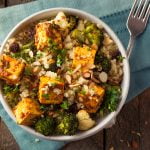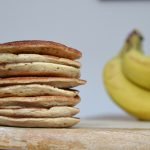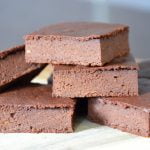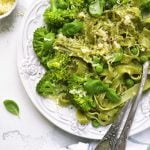Week 5 – Elimination diets, allergies & intolerances
‘What is the worst food for your skin?”…. this is possibly the most common question I’m asked when it comes to diet and skin health. Firstly, there is rarely a single food which is going to take over your skin and cause it to become inflamed overnight, unless of course you have an allergy.
While prioritising eating healthy foods can help you to avoid nutrient deficiencies and promote healing, you may also want to consider which inflammatory foods to avoid.
We may be led to believe that chocolate or coffee is bad for skin, but actually the most common culprits are gluten, dairy, sugar and refined white grains. All of these foods can be inflammatory, and in some cases can trigger an immune reaction.
Is it an allergy or intolerance?
If within 10 minutes of eating a meal, your skin reacts, (or you experience another type of reaction such as a tingly tongue, swollen lips, or shortness of breath), you are very likely to have an allergy to a food. This immediate immune reaction is called an IgE reaction, a true allergy. If your skin flares up randomly and you can’t pinpoint a specific meal or food eaten, but you experience digestive discomfort such as bloating, you may have a food intolerance, an IgG reaction.
Allergies are usually constant throughout your life, or can be grown out of in adulthood. Intolerances on the other hand come and go and are very closely linked to the health of your gut lining. If you have a damaged and inflamed gut lining, you will most likely develop intolerances. If you avoid the foods you are intolerant to, you will then simply develop an intolerance to another food you are eating regularly.
Both IgE (allergy) and IgG (intolerance) blood tests exist, however only IgE test will be carried out by a Doctor, and can also be carried out as a skin prick testing. Tests are not 100% accurate though, and allergies / intolerances on test results do not always correlate with skin inflammation intensity.
How does an elimination diet work?
If you believe that certain foods are aggravating your skin, the gold standard to identify this, is by following an elimination diet. While this can be very strict for a month or two, it usually identifies problem foods.
You begin by eating only 3 simple foods you believe are ok for you e.g. rice, spinach and cod. You then introduce a new food or food group each day and keep a dairy of your symptoms. If your skin reacts, go back two days, avoid these foods until your skin calms down, and then eat them again each one introduced two days apart to confirm if they are causing problems. An elimination diet would usually start off with less offending foods e.g. fruits and vegetables, and would introduce foods such as dairy and gluten towards the end.
It is recommended that this type of diet should only be followed with the support of a nutritionist to ensure you do not limit food groups too strictly, risking deficiencies. Taking a multivitamin supplement is also ideal.
This week you have *ADVANCED* options for each challenge as a few of you gave feedback that you would like this! This is optional of course, so please choose a challenge level that suits you.
Challenge 9: Try a naturally gluten free product you don’t usually eat
– e.g. quinoa, millet, amaranth, almond flour, coconut flour
– Don’t rely on ‘free-from’ gluten free products full of processed ingredients
– Try bean pasta / lasagne sheets
ADVANCED challenge 9: Try gluten-free baking with healthy ingredients
– Bake gluten free vegetable based cakes (e.g. beetroot)
– Bake high protein gluten free bread
– Bake your own oat bars / fruit and nut bars / cookies
– Cook gluten free pancakes
– Don’t rely on refined gluten free flour
Challenge 10: Eliminate added sugar for 1 week
– Read the ingredients list in food labels for sugar
– Be aware of other types of sugar e.g. honey, glucose syrup, dextrose, maltodextrin, maple syrup, rice syrup
– Fruit containing natural sugars is ok to eat
ADVANCED challenge 10: Eliminate added sugar AND refined flours for 1 week
– Read labels and avoid all types of flour e.g. wheat flour, rice flour, tapioca
– If in doubt, avoid packaged foods and eat wholefoods
Recipes for week 5




Recipe of the week
Banana pancakes
Ingredients
- 1 tsp coconut oil
- 2 eggs
- 2 bananas
- 3 tbsp oats
- 1/4 tsp cinnamon
Instructions
- Melt 1/2 tsp coconut oil in a frying pan on a medium heat
- In a blender, blend the eggs, bananas, oats and cinnamon (or mash the banana with a fork and mix all ingredients in a bowl)
- Use half the mix to make 4 mini pancakes in the pan, and cook on a medium heat for 1-2 minutes until starting to brown
- Gently turn the pancakes over with a spatula and cook for a further 1-2 minutes on the other side
- Add the remaining 1/2 tsp coconut oil to the pan and repeat this again to cook the other 4 pancakes
- Eat warm, or leave to cool on a wire cooling rack (store once cool to prevent them going soggy)
